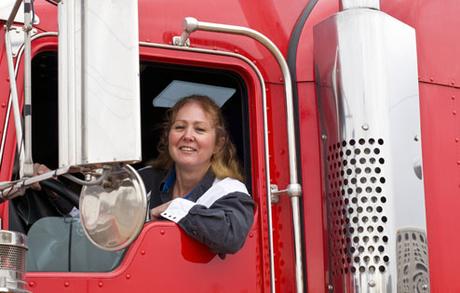 Although I have spent my entire career in the trucking industry, I have a passion for aviation as well. In 2008 I earned my private pilot’s certificate only a few weeks before graduating from a driver-training academy with my commercial driver’s license.
Although I have spent my entire career in the trucking industry, I have a passion for aviation as well. In 2008 I earned my private pilot’s certificate only a few weeks before graduating from a driver-training academy with my commercial driver’s license.
There are so many similarities between aviation and trucking. Both industries have a need for operators (pilots or drivers), mechanics, dispatchers and both groups are anticipating a severe shortage of personnel due to an aging demographic and regulatory changes.
According to Boeing, more than 25,000 new pilots are needed annually to fill current and future needs. The American Trucking Industry predicts a need of about 30,000 annually to fill truck seats.
Additionally, aviation’s female pilot population is about six percent, which is similar to the trucking industry’s percentage of female professional drivers.
For years the trucking industry has pointed to the 21-year-old age requirement for interstate transport as a reason to dismiss high school students as possible future employees. The minimum age requirement for a pilot is also 21, or 23 to transport passengers, but the flight hour requirement often makes this difficult.
The aviation industry isn’t waiting around to recruit these students any longer. I found some amazing examples of industry and public school partnerships that could, and SHOULD be adopted by the trucking industry. If not, we’ll fall even further behind aviation.
In Memphis, the home of FedEx, there are more than a few ways students can learn about aviation or pursue a private pilot’s license. You can see the positive effect the corporation has on the local economy, in addition to their large employee of base of over 30,000 area residents.
The Aviation Career Education (ACE) Academy in Memphis has hosted a summer academy camp for students ages 14-18. The camp isn’t just focusing on flying; they expose students to jobs as mechanics, flight crews, and even administration. The youths were encouraged to sit in the cockpit of a Boeing 777 and experienced flight through simulators.
Although these students weren’t looking for jobs that day, their interest was piqued by learning about the opportunities the company had for all aviation related positions.
What struck me about the students’ experience was the emphasis on the importance of the industry and how it related to each of them individually. One pilot compared her role as First Officer in FedEx Express World Hub as similar to being Santa Clause. She explained how they deliver packages around the world. She talked about delivering pandas, show horses, and expensive cars and described her job as “an adventure.”
Students are able to tour an operations center, an air traffic control tower, or a maintenance hanger, and speak with flight schedulers, maintenance controllers, and, of course, pilots.
The Wooddale High School in Memphis has an optional aviation program. Approximately 90 percent of the students are enrolled in the aviation curriculum. Wooddale is the only public high school in Tennessee to offer an aviation program, which allows students to earn a private pilot certificate at no cost (to the student).
Classes include the Theory of Flight, Introduction to Aerospace, and more. They can get hands-on training in a Cessna 172 owned by a FedEx pilot who donates the use of his airplane to the students. Flight instructors take the students in pairs for three hour trips on weekends in order to log the required number of flight hours needed to obtain a private pilot’s certificate.
The program was started in 1993 with a $1 million grant from NASA.
Across the country in southern California, high school students are also learning about the aviation industry. DaVinci High School youths are learning how to fly before they earn their driver’s license. They first use simulators to plan a route, calculate magnetic headings, and estimate time and distance for the trip.
Math, science, and geography are being taught in a practical way that relates to the aviation industry, while exposing these students to potential careers as pilots, mechanics, and other airline positions.
The Airline Owners and Pilots Association (AOPA) is working on ways to introduce aviation related curriculum at the high school level and is in the process of defining its goals and outcomes for the initiative.
Maybe it’s time for the trucking industry to bring simulators into high schools and middle schools. Maybe it’s time for the trucking industry to invite youngsters into terminals, truck stops, and weigh stations to learn about careers in transportation.
Maybe it’s time for the trucking industry to recognize the importance in reaching out to the next generation and giving them a positive view of an important and massive industry.
Authored by Ellen Voie, Founder of Women in Trucking
Ellen Voie is founder of the Women In Trucking Association, womenintrucking.org. Ellen’s background in the trucking industry began in 1980, when she earned a diploma in Traffic and Transportation Management while employed as Traffic Manager for a steel fabricating plant in central Wisconsin.

